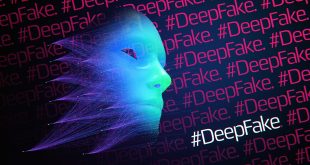
Globally, AI-generated fraud is expanding quickly. Scammers may produce phony audio, video, and picture content thanks to deepfake technology. Both people and corporations are in significant danger from this kind of scam. It’s now simpler than ever to create convincing deepfakes because of AI developments.
Fraudsters employ these deceptive representations to trick others into believing them. The increase in deepfake schemes poses a danger to a number of industries, including entertainment and banking. It is difficult for organizations to identify and stop these crimes. It may have a serious effect on businesses.
Financial losses might be significant, and reputations are harmed. To combat the growing danger, businesses need to remain vigilant. Protecting against deepfake fraud requires effective tactics. To combat these issues, businesses are spending money on training and technology. Deepfakes remain a continual threat in spite of these advances.
Understanding Deepfakes And Their Evolution
Artificial media produced by AI systems are known as deepfakes. They generate bogus material by altering actual photos, videos, or sounds. When edited videos surfaced online in 2017, the technique was first seen. Deepfakes evolved to resemble authentic information almost exactly. Machine learning is used in deepfakes to transform text, sounds, or faces. Originally involving video editing, it now incorporates music and visuals.
Both benign amusement and malevolent purpose may be used with these fakes. They are hazardous because they may imitate well-known individuals, such as politicians or celebrities. Such manipulation used to be challenging and time-consuming. Anyone with rudimentary abilities can now produce convincing fakes thanks to AI technologies. Fraud, fraud, and false information have increased as a result of this quick expansion.
Types Of Deepfake Scams Targeting Businesses
Businesses are now the target of many kinds of deepfake frauds. Deepfake audio is one of the most prevalent phishing schemes. Scammers pose as customers or business executives over the phone. The intention is to transfer money or steal confidential information.
The use of phony video conferencing is another strategy. Scammers use deepfake technology to pose as a reliable coworker. This results in dishonest choices or the disclosure of private data. Fake endorsements are another usage for deepfakes, in addition to impersonations.
To advertise phony goods, scammers fabricate celebrity endorsements. Fake reviews produced using deepfake technology are another prevalent problem. These reviews mislead customers into believing in subpar goods or services. Businesses struggle to tell the difference between authentic and fraudulent information.
Real-world Cases Of Deepfake Scams
Deepfake frauds in the real world have done a great deal of harm. A deepfake fraud cost a UK firm close to $250,000 in 2019. A scammer impersonated the CEO using a deepfake voice clip. They persuaded a worker to deposit funds into a fictitious account. Deepfake films disseminating inaccurate information about businesses was another noteworthy instance.
Customers were distrustful of the brand as a result of these videos. These frauds are especially harmful since they are hard to spot. Businesses sometimes aren’t aware that they’ve been targeted until after the harm has been done. These actual cases demonstrate how crucial it is to identify deepfake fraud as soon as possible. Once a deepfake fraud is discovered, businesses must take immediate action to stop more damage.
How Companies Are Combating AI-Generated Fraud
Businesses are fighting AI-generated fraud in a number of ways. Investing in deepfake detecting technology is one of the most important strategies. Rapid detection of deepfake material is made possible by AI-powered solutions. To identify discrepancies, these programs examine audio, video, and picture data. To bolster their defenses, businesses are now collaborating with cybersecurity companies.
Businesses may acquire the newest fraud protection techniques by working with professionals. It’s also crucial to teach staff members to spot deepfakes. Preventing fraud may be achieved by training employees to challenge dubious media. Additionally, legal steps are being implemented. To combat deepfake fraud, governments and corporations are creating more stringent regulations.
Deepfake producers may be charged with a crime in various nations. Additionally, businesses are encouraging the usage of multi-factor authentication. This provides an additional line of defense against unwanted access. New deepfake technologies are nonetheless developing in spite of these initiatives. Businesses must continue to lead the way.
The Legal And Ethical Implications Of Deepfake Technology
The emergence of deepfakes raises moral and legal questions. Many nations are attempting to enact legislation that addresses deepfake fraud. The purpose of these rules is to penalize people who produce damaging deepfake material. Regulating deepfakes without limiting free expression is difficult, however. Concerns about permission, privacy, and data abuse are ethical issues.
A lot of people who make deepfakes utilize freely accessible photos or movies without authorization. This calls into doubt consent and intellectual property rights. Deepfakes may also be used to sway public opinion. Deepfakes have been used to disseminate misleading information in politics. Businesses and governments are collaborating to solve these issues. They are figuring out how to strike a balance between protecting rights and combating fraud.
The Future Of AI-Generated Fraud And How Companies Can Prepare
Fraud caused by AI seems to have a complicated future. Deepfake technology will keep developing and becoming harder to spot. Scammers will come up with new methods to take advantage of AI as it develops. Businesses need to be ready for more complex frauds. This entails spending money on state-of-the-art software and detecting techniques. Businesses should also concentrate on enhancing cybersecurity protocols.
Identifying new risks may be aided by cooperation with other groups. Businesses need to upgrade their fraud protection systems on a regular basis to keep ahead of the competition. In the next few years, it will be crucial to train staff on new deepfake techniques. Businesses may react to scams more rapidly if they have well-defined plans in place. Additionally, legal frameworks will change to provide improved defense against deepfake fraud. Businesses must make plans in order to reduce risks.
Conclusion
Businesses cannot overlook the rising danger posed by deepfake schemes. Fraudsters are always becoming better at producing convincing false material. Businesses may, however, retaliate with the appropriate instruments and tactics. Enhancing cybersecurity, educating staff, and investing in deepfake detection are crucial actions.
Deepfake fraud is being fought with more assistance thanks to changing legal and ethical frameworks. Even though deepfake technology will keep developing, companies may remain safe by taking preventative steps. Businesses may prevent fraud caused by AI by being alert and adjusting to emerging risks.
 SmartTech blog
SmartTech blog



